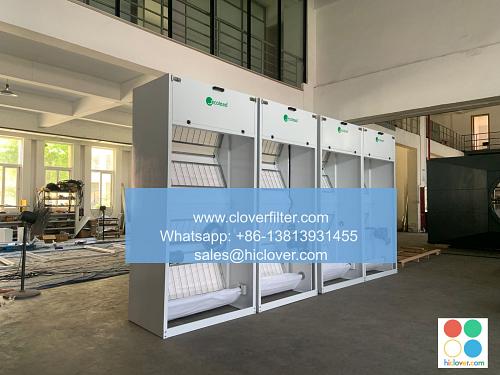The Science Behind Automatic Roll Air Filters: An In-Depth Look

Automatic roll air filters have become a crucial component in maintaining indoor air quality, particularly in commercial and industrial settings. These filters work by automatically rolling out a new section of filter media as the old one becomes clogged with dust and other airborne particles. But have you ever wondered what’s behind the science of these innovative filters? In this article, we’ll delve into the inner workings of automatic roll air filters and explore the principles that make them so effective.
The basic principle behind automatic roll air filters is the concept of filter media replacement. As air passes through the filter, the media becomes increasingly clogged with particles, reducing its effectiveness. To counter this, automatic roll air filters use a roll of filter media that is slowly unwound as the old section becomes saturated. This process is typically triggered by a pressure differential sensor that monitors the airflow and detects when the filter is becoming clogged. Once the sensor detects a predetermined pressure drop, it triggers the roll to advance, exposing a fresh section of filter media to the airflow.
The filter media itself is a critical component of automatic roll air filters. Typically made from a synthetic fiber, such as polyester or polypropylene, the media is designed to capture particles as small as 0.3 microns. The media is usually pleated to increase its surface area, allowing it to capture more particles and reduce the pressure drop across the filter. The pleats are also designed to be self-supporting, eliminating the need for a separate support structure and allowing for a more compact filter design.
One of the key advantages of automatic roll air filters is their ability to maintain a consistent airflow rate, even as the filter media becomes clogged. This is achieved through the use of a constant pressure differential sensor, which ensures that the filter advances at a rate that maintains a consistent airflow rate. This not only ensures that the air quality remains consistent but also reduces the energy required to power the filter, as the fan doesn’t need to work harder to push air through a clogged filter.
In addition to their ability to maintain consistent airflow rates, automatic roll air filters also offer a number of other benefits. For example, they are often more efficient than traditional filters, capturing up to 95% of particles as small as 0.3 microns. They are also relatively low maintenance, as the roll of filter media can be easily replaced when it becomes exhausted. This reduces the need for manual cleaning or replacement of individual filters, saving time and reducing labor costs.
Another important aspect of automatic roll air filters is their ability to adapt to changing airflow rates. In many commercial and industrial settings, the airflow rate can vary significantly depending on the time of day, occupancy levels, or other factors. Automatic roll air filters can adapt to these changing conditions by adjusting the rate at which the filter media advances. This ensures that the filter remains effective, even in situations where the airflow rate is highly variable.
Despite their many benefits, automatic roll air filters are not without their limitations. For example, they can be more expensive than traditional filters, particularly for large-scale commercial or industrial applications. They also require a significant amount of maintenance to ensure that they continue to function effectively, including regular checks on the filter media and the pressure differential sensor. However, for many applications, the benefits of automatic roll air filters far outweigh the costs, making them a popular choice for maintaining indoor air quality.
Conclusion
In conclusion, automatic roll air filters are a highly effective solution for maintaining indoor air quality, particularly in commercial and industrial settings. By automatically rolling out a new section of filter media as the old one becomes clogged, these filters can maintain a consistent airflow rate and capture up to 95% of particles as small as 0.3 microns. While they may be more expensive than traditional filters and require regular maintenance, their benefits make them a popular choice for many applications. Whether you’re looking to improve indoor air quality in a commercial building, industrial facility, or other setting, automatic roll air filters are definitely worth considering.
FAQs
Q: Can I use an automatic roll air filter in a residential setting? A: While automatic roll air filters are typically used in commercial and industrial settings, they can also be used in residential settings, particularly in large homes or buildings with complex HVAC systems. However, they may be more expensive than traditional filters and may require more maintenance.
Q: How do I know if an automatic roll air filter is right for my application? A: To determine if an automatic roll air filter is right for your application, consider factors such as the size of the space, the amount of airflow, and the level of air quality required. You should also consider the cost and maintenance requirements of the filter, as well as any specific features or benefits that are important to you.

